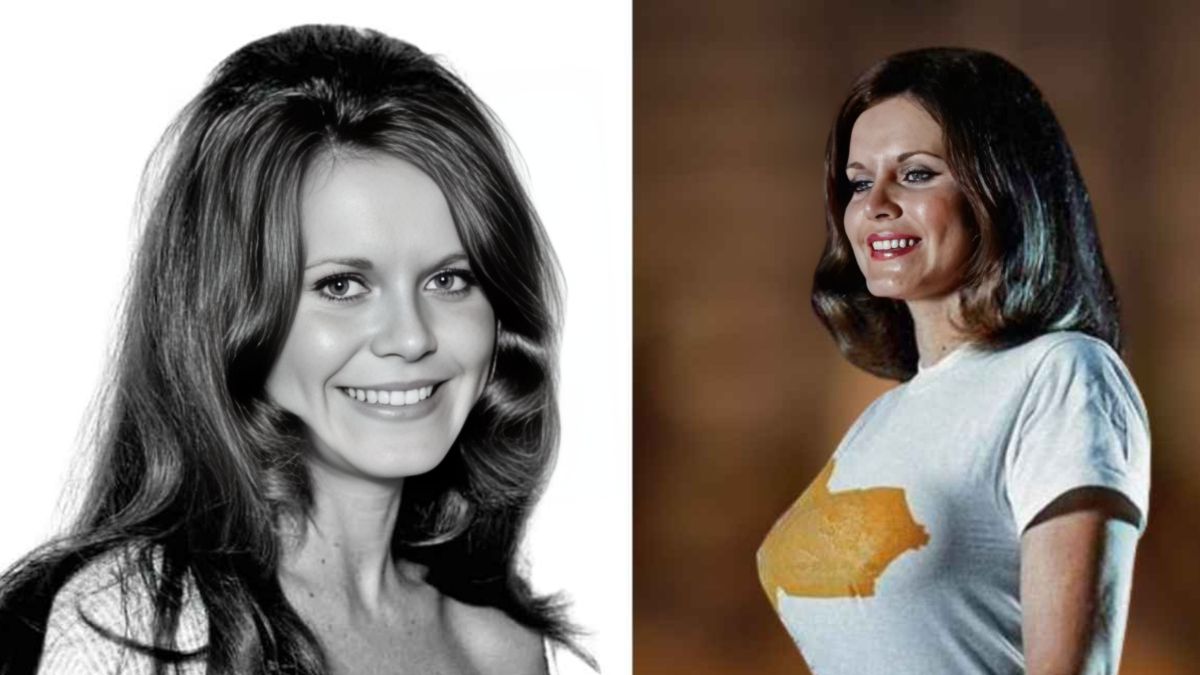Barbara Roufs: The Glamorous Icon of 1970s Drag Racing Culture

Barbara Roufs was more than just a pretty face in the male-dominated world of motorsports. She was a cultural icon, a fashion symbol, and a beacon of confidence during the golden age of drag racing in the early 1970s. Known for her electrifying charm and bold style, Barbara Roufs broke barriers and brought an undeniable energy to the racing tracks of Southern California. But behind the beauty and fame was a woman with a story that few truly understood.
Early Life and Family Background
Born in 1944 in Southern California, Barbara Roufs was the daughter of Wayne Eldon Riley and Thelma Ruby Riley. Her father was deeply involved in motorcycle racing, and her mother ran a beauty salon and served as a church organist—an unusual blend of adrenaline and artistry that perhaps shaped Barbara’s dynamic personality.
Barbara grew up in a lively household. She had multiple siblings, including Vivian Deaton, James Riley, Bruce Riley, and an adopted brother, Ben Gube. The household was vibrant and grounded in middle-American values, but Barbara had something different—an ambition to shine beyond the walls of her home.
Even in her youth, Barbara stood out. She possessed a free-spirited nature, striking looks, and a magnetic personality. As a teenager, she explored modeling and local pageants. But it wasn’t until her later years that her life took a dramatic and public turn.
Entering the World of Drag Racing
Unlike many who find fame early in their twenties, Barbara Roufs made her mark at the age of 29, which was considered mature for the role of a trophy girl in the 1970s drag racing scene. Yet her age worked in her favor. She brought confidence, poise, and a sense of empowerment that made her irresistible to fans and photographers alike.
Barbara was quickly embraced by the racing community and became a trophy girl for several major drag racing events. One of her most memorable roles was being crowned the queen of the sixth annual U.S. Professional Dragster Championship. Later, she went on to serve as the 1973 PDA (Professional Dragster Association) Queen, further cementing her place in motorsport history.
Her presence wasn’t just about handing trophies. She was a trendsetter, often seen in go-go boots, crop tops, and flared pants, all while sporting her signature long, straight hair. At a time when drag racing was intensely competitive and male-dominated, Barbara brought an element of style and spirit that the scene had never witnessed before.
A Style That Defined an Era
Barbara’s style mirrored the cultural shifts of the 1970s. The U.S. was in a state of flux—freedom, expression, and individuality were becoming more important than ever. In many ways, Barbara embodied this new spirit. Her wardrobe was bold, her smile infectious, and her vibe completely unbothered by traditional expectations.
She wasn’t just dressing to impress; she was dressing to express. Her fashion choices were a direct challenge to the more conservative standards of the time. She owned her look, owned her age, and made it clear she was in charge of her image.
Her popularity soared. Fans would line up to take photos with her, and photographers were eager to capture her at every race. She became the face of the track—not for her speed, but for her electrifying presence.
Behind the Fame: The Woman at Home
While Barbara was lighting up the racing world, she was also a mother. She had a daughter named Jet Dougherty, who would later become the voice behind much of Barbara’s untold story. According to Jet, her mother was full of life, joy, and energy that extended far beyond the race tracks.
Barbara was a loving mother who enjoyed music, nature, and time spent with family. Her daughter describes her as someone who always knew how to find joy, even in the smallest things. She danced to the rhythm of her own drum and spread happiness wherever she went.
Despite the attention and admiration she received, Barbara remained humble. She never let fame inflate her ego. She continued to live modestly, choosing experiences over material possessions, and relationships over recognition.
The Tragic End
In 1991, the vibrant life of Barbara Roufs came to a heartbreaking end. She died by suicide at the age of 47. The details of her death were largely unknown to the public until many years later when her daughter confirmed the news.
The shock of her passing rippled through the racing community. Fans who remembered her bright smile and bold fashion were stunned. Many couldn’t comprehend how someone who brought so much joy to others could have silently suffered.
Barbara’s daughter later spoke about her mother’s final years, reflecting that despite outward appearances, Barbara had internal struggles. Still, she believed her mother would be proud to see how much love and appreciation people continue to show for her photos and memories.
Legacy in Motorsports
Barbara Roufs may have left this world far too early, but her legacy has only grown stronger. Today, she is remembered not just as a racing trophy girl, but as a cultural icon of the 1970s drag racing scene.
Her influence paved the way for future generations of women in motorsports—not just in supporting roles, but in leadership and competitive driving as well. She made it clear that you could be both glamorous and powerful, feminine and fearless.
The resurgence of interest in Barbara Roufs’ life in recent years is a testament to her enduring appeal. Photographs of her continue to circulate on social media, bringing nostalgic joy to older fans and curiosity to younger generations who want to know more about the woman behind the lens.
Why Barbara Roufs Still Matters Today
Barbara’s story speaks volumes about how beauty, fame, and public adoration are not always enough to secure personal peace. Her journey is a reminder to check in on those who seem the brightest. But it’s also a story of inspiration—of someone who grabbed life with both hands and lived loudly, unapologetically, and with style.
In today’s world, where social media creates endless pressure to maintain appearances, Barbara’s life serves as both a celebration and a cautionary tale. She reminds us to seek balance, cherish our authentic selves, and appreciate those who walk beside us.
Conclusion
Barbara Roufs wasn’t just a name in the drag racing scene—she was the heartbeat of an era. Her impact goes far beyond the tracks of Southern California. With style, grace, and an unmatchable spirit, she carved out a space for herself in a world that rarely made room for women.
Even in her absence, Barbara continues to inspire. Her story is one of brilliance, beauty, and bravery. And as long as motorsports and vintage culture are celebrated, the name Barbara Roufs will never be forgotten.
Discover the legacy of Barbara Roufs and celebrate her bold spirit.



